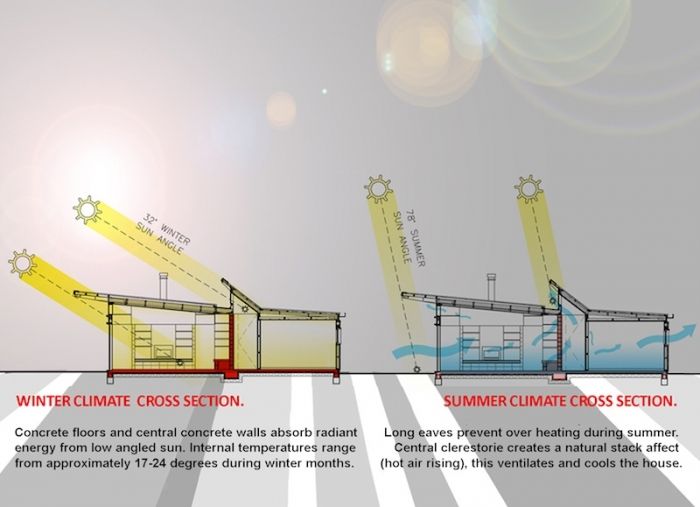Building concepts and designs are constantly evolving, as technology and innovation change what is possible. In recent years the "Passive House" concept has been gaining in popularity, and while it has gained a considerable foothold in Europe, it is only now seeing more traction in North America. Contact L. Patten today if you are looking for a custom home builder or have any questions about Passive Houses.
What Is A Passive House?
A Passive House is more of a construction concept than a style, the sole purpose being to dramatically reduce the energy required for heating and cooling. A certified Passive House uses up to 90% less energy than a conventionally built house, which translates into considerable cost savings, not to mention being more environmentally responsible. The goal of a Passive House is to have a consistent, year-round indoor temperature, which requires little or no energy to maintain.
So, What Does It Take To Build A Passive House?
To start, it’s important to understand that any type of house can be a Passive House. The certification depends solely on heating and cooling requirements and volume of air exchange. To be a true Passive House, it must meet a specific performance standard. The measurements are very exact, but essentially quite simple, and there are a growing number of governing bodies now available to grant a Passive House certification. To achieve the Passive House standard, 5 key elements are required:
1. Insulation
A Passive House is very thoroughly insulated. The type of insulation doesn’t really matter, though it will affect the thickness of the walls. A cheaper form of insulation (cellulose, fibreglass) will require a greater thickness than the more expensive kinds (spray foam, SIPs). Typically, though, you can expect exterior walls that are 12”-16” thick on average, to allow for an adequate thermal barrier.
2. Thermal Bridge-Free Design
Thermal bridging occurs when a more conductive (or poorly insulating) material allows an easy pathway for heat flow across a thermal barrier. This can occur where wood wall studs meet the exterior cladding, or where an appliance is vented directly outdoors. Any space where the insulation breaks is essentially a thermal bridge. In a Passive House, the goal is to design a building with no thermal bridging. This can be achieved in numerous ways, which is why if you are considering a Passive House, a designer with experience is highly recommended.
3. Airtight Construction
The whole point of the Passive House is to minimize (or even delete) the energy required to heat and cool the interior space. Thus it is critical that the outside air can’t whistle it’s way in through gaps and cracks around the house. Great care must be taken to seal all seams, gaps and tiny holes, with particular care taken around windows and doors. It also means that humidity from activity within the house, from kitchens, washrooms, and laundry rooms, does not make it’s way into the building envelope and create condensation and possibly mold.
4. Heat Recovery Ventilation
This is one of the most important aspects of the Passive House, as it allows the airtight construction to work. Without it, the air in such a house would quickly become stale and unhealthy. HRV systems ensure that a constant supply of fresh outdoor air is brought indoors, and heated to interior temperature by the stale air being expelled outside. While a big furnace or air conditioner is not needed in a passive house, a good air exchange system most certainly is.
5. Highly Insulated Windows
Many people think that a Passive House must have small windows, but that is not the case. Larger windows can be used to generate solar heat in the winter, as long as they are sheltered from the strong summer sun. Often precisely pitched roof overhangs are used for this purpose. An example of the type of windows possible can be seen here.
It’s important to remember that these windows must have a high insulation value; triple-pane glass would be the norm. While this will increase the cost of the windows over a more conventional build, it is necessary for the performance standards to be met.
Custom Home Builders
In the end, while the Passive House standard is undeniably a worthwhile goal, good builders are now embracing many of the passive house concepts in their conventional builds, and houses, as a result, are becoming more and more energy efficient. At L. Patten and Sons, we strive to build each and every house to a very high standard of energy efficiency, and have taken much of what has been learned through Passive House design and incorporated it into our clients’ homes.
"We found Jerry Patten to be honest, frugal, reliable, punctual, and extremely knowledgeable." - Jack and Sue
Quick Links
- There are myths surrounding the passive house, and many of them are well-addressed in the following blog post: Ten Misconceptions About Passive House Standards
- If you are interested in reading about one family’s experience in building a passive house, have a look at this blog. It addresses the unique challenges that come with the passive house design.
- Most everything else, including many relevant links, can be found here: Passive House Canada







